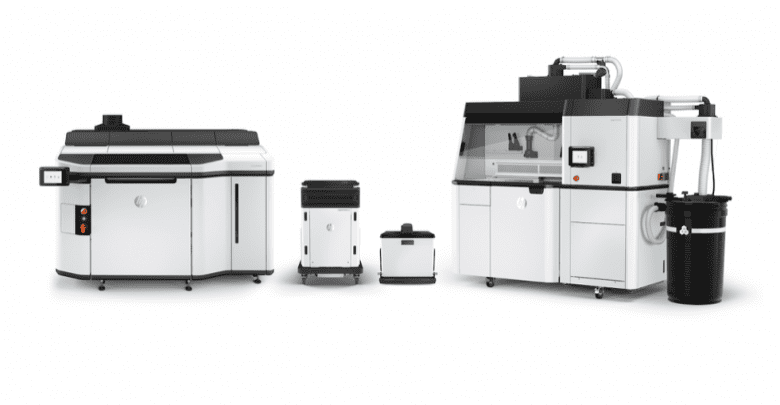Forecast3D has installed two HP Multi Jet Fusion 5210 platforms and is among the first manufacturers to use BASF’s newly qualified ULTRASINT thermoplastic polyurethane (TPU) material.
The Californian 3D printing service provider now has a fleet of 26 HP additive manufacturing machines and will be able to produce parts in Nylon PA 12, PA 12 Glass Beads, PA 11, and of course the TPU.
This fourth option has allowed Forecast3D to begin exploring new applications thanks to its ability to produce parts with less weight, enhanced performance, and greater comfort. The company also cites the ability to implement lattice structures to generate better impact performance and ventilation as a key benefit. So far, Forecast3D has outlined protheses, helmets, body armour, footwear, sports braces, and fashion pieces as ‘potential future product lines that will really benefit from this technology.’
Forecast3D has been in operation since the mid 1990s, starting out as rapid prototyping service provider and, over time, expanding its offering to include end-use parts in industries like medical, aerospace and automotive. It boasts an array of 3D printing technologies, from SLA and SLS to DMLS, as well as subtractive methods of manufacture like urethane casting and CNC machining. In the last few years, the company has invested big in HP’s Multi Jet Fusion technology and is counted as one of the service providers in HP’s Digital Manufacturing Network, which was announced as the 5200 series was first unveiled.
“We have been leading the Multi Jet Fusion movement for the last two years and now, to keep up with business growth, we want to have the latest equipment and materials,” commented Ken Burns, Technical Director at Fortify3D. “We’re excited to be part of the 4th Industrial Revolution. The transition to Digital Manufacturing is changing the way companies design, innovate, and get their parts. It’s really rewarding to see how quickly product developers are recognising these benefits and taking advantage of what these technologies can solve for today.”
“Up until now, all of our digital manufacturing has been in rigid nylon polymers. With the introduction of this low-cost 3D printed TPU elastomer, we expect an increased amount of opportunities to come from the ability to achieve mass customisation with a solution that can provide a softer custom interface with the body,” added Corey Weber, Fortify3D President and CEO.
Source: tctmagazine


